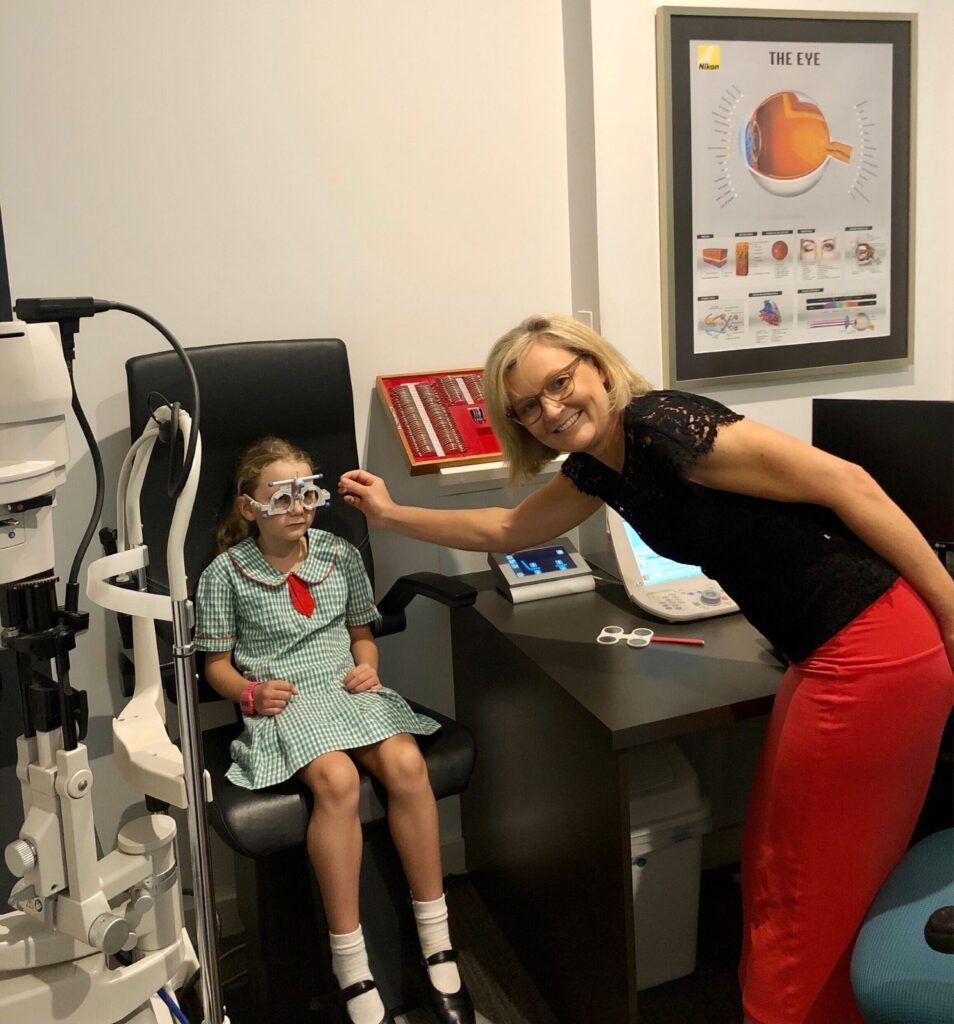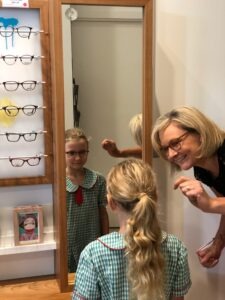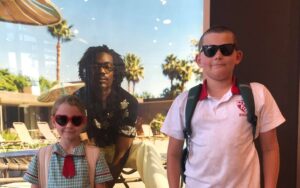Kids have been back at school for a few weeks now, so they may be starting to notice some issues with their eyes that aren’t as present during the holidays. Back at school they concentrate using their short-distance vision for extended periods of time; reading, writing, and using electronic devices. This is interspersed with periods where they focus on texts and videos seen on whiteboards and smartboards, from a distance.
Perhaps your child has mentioned their vision gets blurry in class, or that they keep mixing up their words when they’re reading, or perhaps they’re complaining about headaches. Whatever the concern, it’s important to know what vision problems children can experience, in order to recognize the presentations in your own kids.
Some common vision problems that can be experienced by both adults and children alike are listed below.
Hypermetropia
Hypermetropia is commonly referred to as long-sightedness. The condition makes it difficult to focus up close, which can lead to eye strain and headaches. It is caused by a refractive error in the eye, which occurs because the eyeball is shorter than it should be, making the cornea too flat to correctly process light. Long-sightedness requires spectacles, contact lenses and/or vision therapy to correct.
Myopia
Myopia is commonly referred to as short-sightedness. This condition leads to blurred distance vision and can develop rapidly or over time. It is also caused by a refractive error in the eye, which occurs when the eyeball is too long, this leads to the light being processed too far in front of the retina. Short-sightedness also requires spectacles, contact lenses and/or vision therapy to correct.
Astigmatism
Astigmatism is distortion of vision at all distances. It is caused by an abnormality in the shape of the cornea which leads to refractive errors. Astigmatism also requires spectacles, contact lenses and/or vision therapy to correct.
Children can also experience vision concerns that are age-specific, some of which are listed below. These issues are particularly important to keep an eye out for because they can lead to delayed learning outcomes.
Tracking
Tracking involves the ability to move slowly over a line of text. It is often highlighted when children are unable to progress with reading skills, moving onto smaller fonts and closer spacing. It can also be seen with continued reversal of letters and numbers and left-right confusion (e.g. saw and was).
Convergence problems
Convergence problems are the inability to turn both eyes to position at the same plane as the focusing system. This results in words moving on a page and losing track of place when reading. It is usually highlighted when kids adjust their head tilt, move their eyes closer to the page, or cover one eye when they’re reading.
Accomodation problems
Accommodation problems concern the inability to readjust focus from one distance to another. This results in difficulty transposing information from the whiteboard or smartboard to the page in front. It is shown in slow progress with work, fatigue, losing track of information, and spelling mistakes.
Lazy or turned eye
A lazy eye is caused by the misalignment of the two eyes from birth or trauma, and is often evident cosmetically. However, it can be more subtle and is critical to pick up as there is a window of opportunity to fix until 7 or 8 years old. If it is not corrected, it can result in permanent weakness of the eye.
The good news is there are a number of healthy habits that can help protect your child’s eyes. Firstly it is important for kids to have balance in their worlds; for happy eyes this means having a mixture of both indoor and outdoor learning and play environments. While on devices it’s important to have good posture with eyes at least 50cm from the screen, and to have good ambient lighting. Additionally it’s important to limit exposure to hand held electronic devices in infants.
If you have concerns about your child’s vision, or just think it’s time for a checkup, book an appointment for them to see one of our friendly optometrists!
Make a Booking








